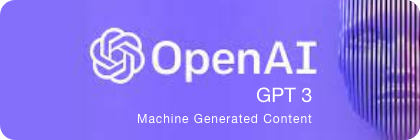Non-fungible tokens (NFTs) are digital assets that are stored on a blockchain and represent unique, one-of-a-kind items such as collectibles, digital art, and virtual real estate. They are typically implemented using smart contracts, which are self-executing contracts with the terms of the agreement between buyer and seller being directly written into lines of code.
There are several different standards and protocols that can be used to implement NFTs, including ERC721 and ERC1155 on the Ethereum blockchain. These standards define a set of functions and rules that must be followed in order to create and manage NFTs in a consistent and interoperable way.
To program an NFT, you will need to familiarize yourself with the specific standard or protocol that you are using, as well as with the programming language and tools used to develop smart contracts on the blockchain platform of your choice. This may include learning a programming language such as Solidity or Vyper, and using development environments and testing tools such as Remix and Truffle.
It’s worth noting that programming NFTs can be a complex and technical process, and it may require a strong understanding of blockchain technology and smart contract development. It’s always a good idea to do thorough research and seek guidance from experienced developers before embarking on an NFT project.

Solidity is a programming language for writing smart contracts that run on the Ethereum Virtual Machine (EVM). It was developed specifically for the purpose of implementing smart contracts on the Ethereum blockchain, and is now the most widely used language for this purpose.
Solidity is a high-level, object-oriented language that is influenced by C++, Python, and JavaScript. It includes support for data types, variables, functions, and control structures such as loops and conditionals. Solidity also includes support for complex data structures such as arrays and mappings, as well as for defining and implementing custom data types and contracts.
One of the main features of Solidity is its support for contract inheritance, which allows contracts to inherit the characteristics and functions of other contracts. This makes it possible to create complex, modular smart contracts that can be easily reused and extended.
Solidity is a compiled language, which means that it must be translated into machine code that can be executed by the EVM. This is typically done using a Solidity compiler, which translates the Solidity code into bytecode that can be deployed to the Ethereum blockchain.
Overall, Solidity is an essential tool for anyone looking to develop smart contracts on the Ethereum platform. It is a powerful and flexible language that is widely used in the blockchain industry, and is well-suited for a wide range of use cases.

Remix is an online Integrated Development Environment (IDE) for the Solidity programming language. It is used for writing, testing, and debugging smart contracts that run on the Ethereum Virtual Machine (EVM).
Remix features a built-in Solidity compiler, an interactive debugger, and a testing environment that allows developers to deploy and test their smart contracts on a simulated EVM. It also includes a number of helpful tools and features, such as syntax highlighting, autocomplete, and code linting, to make it easier to write and understand Solidity code.
One of the main advantages of Remix is that it is browser-based, which means that it can be accessed from any device with an internet connection. This makes it an attractive option for developers who want a convenient and easy-to-use platform for developing smart contracts.
Remix is an open-source project that is maintained by the Ethereum Foundation and is widely used by developers around the world. It is a popular choice for developers who are just starting out with Solidity and smart contract development, as it provides a friendly and intuitive interface that makes it easy to get up and running quickly.
Overall, Remix is a powerful and useful tool for anyone looking to develop smart contracts on the Ethereum platform. It is well-suited for a wide range of use cases and is an essential part of any Ethereum developer’s toolkit.

About Content
“Please note that the content on this page was generated by a machine learning model and may not be entirely accurate or reflect the views of the website. It is intended for informational purposes only and should not be relied upon as professional advice.”
